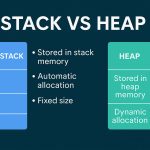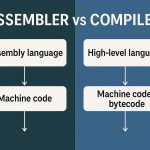Description
A Feedforward Network is the most fundamental type of artificial neural network (ANN), where data moves strictly in one direction—from input to output—without any cycles or loops. It is called “feedforward” because the input flows forward through the network layers without feedback from later to earlier layers.
Feedforward networks form the backbone of deep learning architectures, especially in problems such as image classification, tabular data analysis, and time-independent pattern recognition. Though conceptually simple, they are highly versatile and serve as the foundation for more advanced models.
Architecture Overview
A feedforward network consists of the following layers:
1. Input Layer
- Receives the raw data.
- Each node represents one input feature.
- No computation happens here—only data entry.
2. Hidden Layer(s)
- One or more intermediate layers.
- Each neuron applies a weighted sum, adds a bias, and passes the result through an activation function.
- Enables the network to learn complex nonlinear functions.
3. Output Layer
- Final layer that provides the prediction.
- Number of neurons and activation function depend on the task:
- 1 neuron + sigmoid for binary classification
- n neurons + softmax for multi-class classification
- 1 neuron + linear for regression
Data Flow: Forward Pass
The network processes the input data in a layer-by-layer fashion, computing each neuron’s output as:
z = w · x + b
a = f(z)Where:
xis input vectorwis weight vectorbis bias termf()is the activation function (e.g., ReLU, sigmoid, tanh)ais the neuron’s output (activation)
This output becomes the input for the next layer.
No Feedback or Recurrent Loops
Feedforward networks are acyclic. That is, information flows in one direction only. There are no feedback loops like in Recurrent Neural Networks (RNNs). This makes them:
- Easier to train
- Faster to compute
- Less suited for temporal or sequence data
Example: Single Hidden Layer Network
import numpy as np
def sigmoid(x):
return 1 / (1 + np.exp(-x))
# Sample weights and biases
W1 = np.random.randn(4, 3)
b1 = np.random.randn(4, 1)
W2 = np.random.randn(1, 4)
b2 = np.random.randn(1, 1)
# Input vector (3 features)
x = np.array([[0.5], [0.2], [0.8]])
# Forward pass
z1 = W1 @ x + b1
a1 = sigmoid(z1)
z2 = W2 @ a1 + b2
output = sigmoid(z2)
print("Predicted output:", output)Activation Functions
Feedforward networks rely on activation functions to introduce non-linearity:
| Activation | Formula | Usage |
|---|---|---|
| ReLU | max(0, x) | Most hidden layers |
| Sigmoid | 1 / (1 + e^(-x)) | Binary classification |
| Tanh | (e^x - e^(-x)) / (e^x + e^(-x)) | Earlier networks |
| Softmax | e^(zᵢ) / Σ e^(zⱼ) | Multi-class classification output |
Loss Functions
The choice of loss function depends on the task:
- Mean Squared Error (MSE): regression tasks
- Binary Cross-Entropy: binary classification
- Categorical Cross-Entropy: multi-class classification
Backpropagation in Feedforward Networks
While the forward pass pushes data through the network, the backward pass (backpropagation) updates weights to minimize the loss.
Steps:
- Compute loss between prediction and true output.
- Calculate gradients of loss w.r.t weights using the chain rule.
- Update weights using an optimizer (e.g., gradient descent).
Training Loop Example (Keras)
from keras.models import Sequential
from keras.layers import Dense
model = Sequential()
model.add(Dense(64, input_dim=10, activation='relu')) # Hidden layer
model.add(Dense(1, activation='sigmoid')) # Output layer
model.compile(optimizer='adam', loss='binary_crossentropy', metrics=['accuracy'])
model.fit(X_train, y_train, epochs=20, batch_size=32, validation_split=0.2)Applications of Feedforward Networks
🧮 Tabular Data Regression/Classification
🖼️ Image Recognition (in simpler pipelines)
🧠 Feature Engineering Automation
📊 Forecasting without sequences
🔍 Anomaly Detection
🧪 Medical Diagnosis with Structured Inputs
Limitations
❌ Lack of Temporal Memory
Cannot capture sequence patterns or time-based dependencies.
❌ Not Ideal for Images at Scale
Fully connected layers don’t scale well with high-dimensional data like raw pixels—CNNs are preferred.
❌ Training May Converge Slowly
Especially with poor initialization or suboptimal learning rates.
Enhancements and Variants
Modern architectures often build upon feedforward networks by adding:
- Batch Normalization
- Dropout Regularization
- Residual Connections (ResNets)
- Deep Layer Stacks (DNNs)
- Autoencoders for unsupervised learning
Summary
| Component | Description |
|---|---|
| Data Flow | Unidirectional (input → output) |
| Feedback | None |
| Layer Types | Input, Hidden, Output |
| Training | Gradient descent + backpropagation |
| Use Cases | Simple classification/regression, tabular data |
| Advantages | Simplicity, fast computation |
| Drawbacks | Limited expressiveness for sequential or spatial data |
Snippets
Simple Feedforward Architecture (PyTorch)
import torch.nn as nn
class FeedforwardNet(nn.Module):
def __init__(self, input_dim, hidden_dim, output_dim):
super().__init__()
self.layer1 = nn.Linear(input_dim, hidden_dim)
self.activation = nn.ReLU()
self.output = nn.Linear(hidden_dim, output_dim)
def forward(self, x):
x = self.activation(self.layer1(x))
return self.output(x)Related Keywords
Activation Function
Backpropagation
Bias Term
Computational Graph
Deep Neural Network
Dropout Layer
Feedforward Neural Network
Forward Propagation
Gradient Descent
Hidden Layer
Layer Normalization
Loss Function
Multilayer Perceptron
Neural Network Architecture
Optimizer Function
Parameter Initialization
ReLU Activation
Training Epoch
Weight Matrix
Zero Bias Initialization









